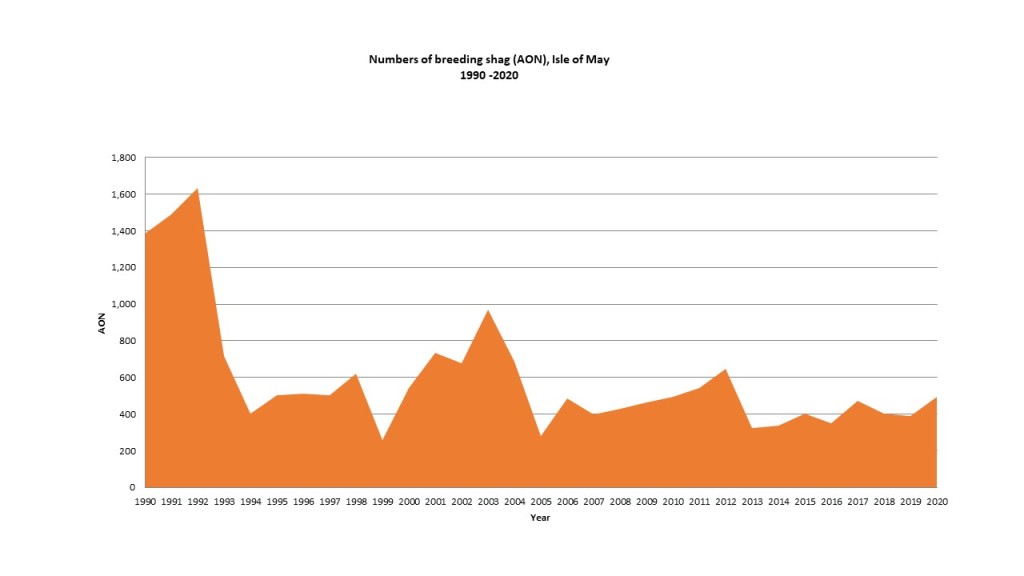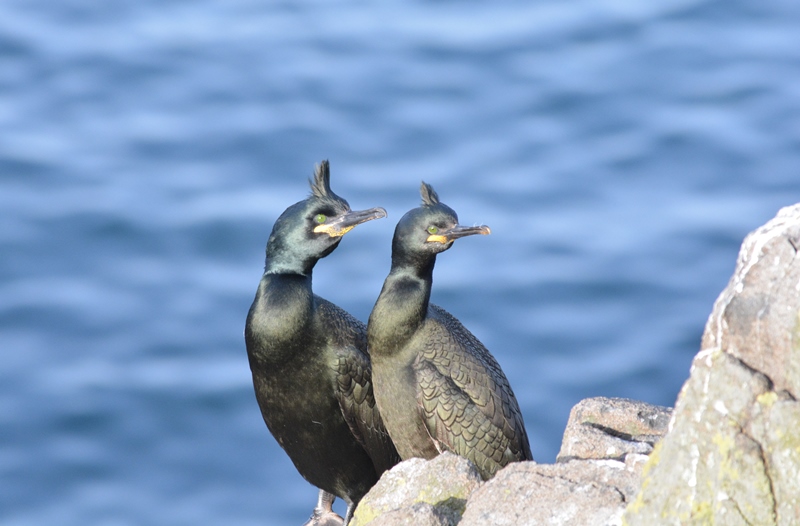



Sunday 17th January comments: Yesterday we introduced the European Shag as p[art of the series on the seabirds of the Isle of May. Today we bring you the news of what has been happening to the Shag population on the Isle of May and the national picture. The seabirds we have featured so far in the series (Guillemot, Razorbill and Fulmar) have shown increases or with a stable population. However the populations of Shags on the island and nationally have been shown concerning declines over the last few decades.
Last year the full island census revealed some positive news as 495 pairs were counted nesting, an increase of 27% compared to 2019. However if you look at the longer term figures, this still remains a real concern as it wasn’t that long ago (the early 1990’s) when the island supported populations of over 1,600 pairs. There have been a number of reasons for these drops, such as the algae toxin blooms in 1992 which dropped the Isle of May Shag population from 1,634 pairs to a dramatic 715 pairs the following year. This dramatic drop (which the population has never really recovered from) was also noted in other North Sea seabird colonies. Overall the national picture has revealed a decline of 37% in populations of European Shags between 1986-2018 to an estimate of 17,500 pairs. This perilous number shows that there is so much more to be done for our seabirds as climate change and over-fishing are just some of the serious threats our seabirds face.
Tomorrow we’ll continue the series with news in how you can help report Shag movements, as we bring you some important citizen science.
